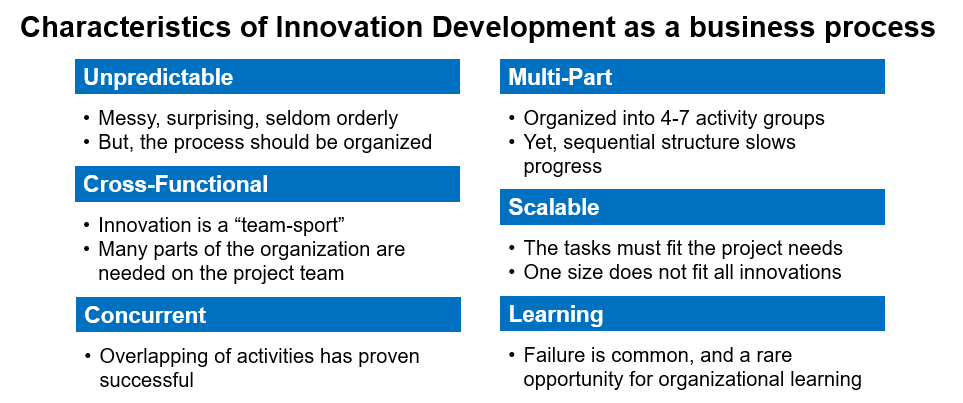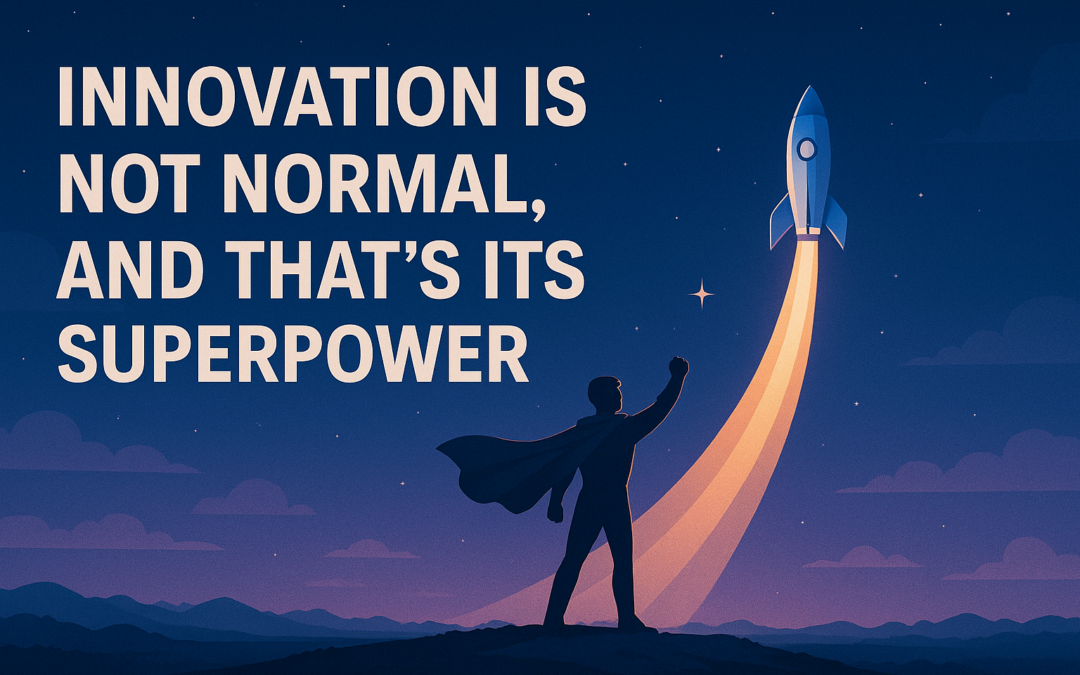"Anyone who has never made a mistake has never tried anything new."
— Albert Einstein —
In the structured world of business processes, Innovation is strange. The common assumption is that innovation can be managed like a typical business process. Instead, I have learned the hard way that Innovation is not normal, and leaders must embrace its unique characteristics to successfully lead it.
The Challenge of Process in Innovation
In organizations, business processes are designed for predictability. Objectives are set, workflows are optimized, and outcomes are expected. But innovation development doesn’t follow this script.
Innovation is not a linear process. Unlike typical operations that thrive on consistency, innovation lives in uncertainty. Solving unknowns requires testing, prototyping, and exploring multiple solutions – not rushing to finalize a design. Paradoxically, adding variation with extensive experimentation can reduce waste by helping teams discover problems earlier and avoid costly rework later when it is very expensive to correct.

Innovation Is Messy – But Must Be Organized
While innovation is not entirely predictable, that doesn’t mean it should be chaotic. The key is flexibility. Instead of rigid, phase-gated processes, and exhaustive checklists, teams should organize related activities into groups that can flex and adapt depending on the project's needs. Successful methods are multi-part systems that organize tasks for clarity and permit coordination without locking into a strict sequence.
This approach allows project teams to manage complexity while staying responsive. Every innovation is different, and processes must be scalable – tailored to the unknowns and scale of the project. A breakthrough product will need a more comprehensive development path than a product update. Organizations that treat all innovation projects the same way often waste resources.
Innovation Is a Team Sport
Another way innovation differs from traditional processes is that it is cross-functional. While many business functions operate in silos, innovation demands collaboration across the organization. Engineers, designers, marketers, and operations specialists all bring essential insights to the project.
By involving diverse teams early, organizations can create more robust solutions that address all dimensions of a product’s success. This cross-pollination of ideas also helps break down barriers that typically result in hand-off errors between functions.
The Power of Concurrency
Traditional development models often enforce a strict sequence: finish one phase, then move on to the next. But successful innovation efforts utilize concurrent development – activities that overlap, enabling feedback and iteration.
This concurrency not only speeds up the timeline but also enhances quality. By solving problems collaboratively and iteratively, teams are less likely to miss critical issues that surface only in later phases, requiring costly rework.
Learning from Failure
Failure is often seen as the result of bad management. But in a system of innovation, failure is reality. If development is obvious, straightforward, and completed without error, then anyone could do it, and the project is probably not innovative. Knowledge Management is the method of turning failures into learning opportunities – capturing insights from experiments, whether successful or not, and making them available for future teams.
Companies that systematically learn from their innovation efforts build a competitive edge. They accumulate expertise, understand trade-offs better, and consistently improve their outcomes. Over time, they don’t just reduce errors – they develop capabilities for success.
Embracing the Unusual
If you're a leader responsible for innovation, the lesson is clear: don’t try to force innovation into the pattern of standard business processes. Instead, recognize its unique character—messy, cross-functional, iterative, and deeply human. Organize for flexibility. Encourage experimentation. Promote collaboration. Innovation may not be normal – but with enlightened leadership, it can be extraordinary.
Have an experience about how strange innovation is ? Please share.
Questions;
Have an experience about how strange innovation is ? Please share.
What aditional or other ways have you explored that successfully enhance innovation?
Join the conversation at our LinkIn group!

Larry Navarre
Kettering University
Larry Navarre is a full-time Lecturer at Kettering University teaching courses in innovation development, supply chain management, project management, and business analytics since 2008. Larry has earned a Bachelor of Business Administration degree from Kent State University (Kent, Ohio) and a Master of Science in Management degree from Purdue University's Krannert Graduate School of Management (West Lafayette, Indiana). Larry has 20 years of management experience in the steel, machinery, and plastics industries. His management responsibilities have spanned from Production Supervisor to Director of Global Product Management and Asian Operations. He has worked internationally with customers, suppliers, and colleagues in 20 countries. Larry is also a managing owner of two family-owned small businesses managing commercial real estate.




